Youngtaek Kim
Distortion-Aware Brushing for Interactive Cluster Analysis in Multidimensional Projections
Jan 17, 2022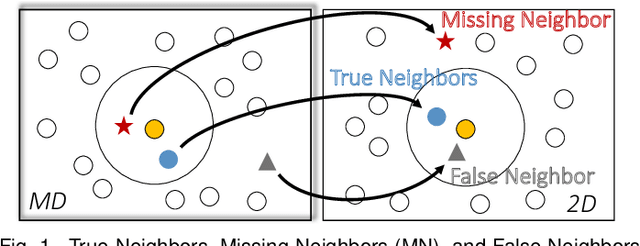
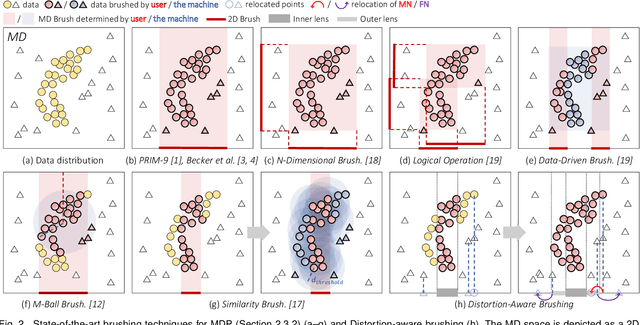
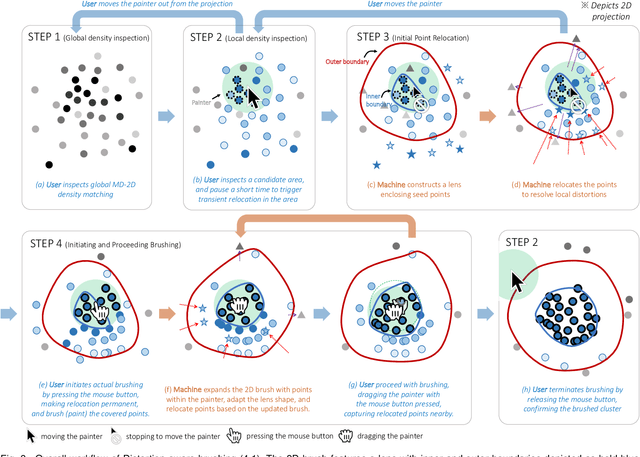
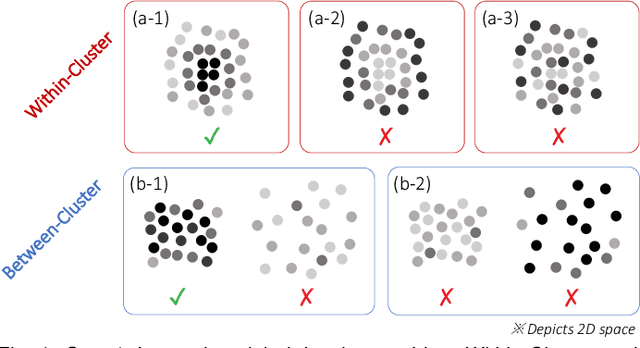
Abstract:Brushing is an everyday interaction in 2D scatterplots, which allows users to select and filter data points within a continuous, enclosed region and conduct further analysis on the points. However, such conventional brushing cannot be directly applied to Multidimensional Projections (MDP), as they hardly escape from False and Missing Neighbors distortions that make the relative positions of the points unreliable. To alleviate this problem, we introduce Distortion-aware brushing, a novel brushing technique for MDP. While users perform brushing, Distortion-aware brushing resolves distortions around currently brushed points by dynamically relocating points in the projection; the points whose data are close to the brushed data in the multidimensional (MD) space go near the corresponding brushed points in the projection, and the opposites move away. Hence, users can overcome distortions and readily extract out clustered data in the MD space using the technique. We demonstrate the effectiveness and applicability of Distortion-aware brushing through usage scenarios with two datasets. Finally, by conducting user studies with 30 participants, we verified that Distortion-aware brushing significantly outperforms previous brushing techniques in precisely separating clusters in the MD space, and works robustly regardless of the types or the amount of distortions in MDP.
Measuring and Explaining the Inter-Cluster Reliability of Multidimensional Projections
Jul 22, 2021
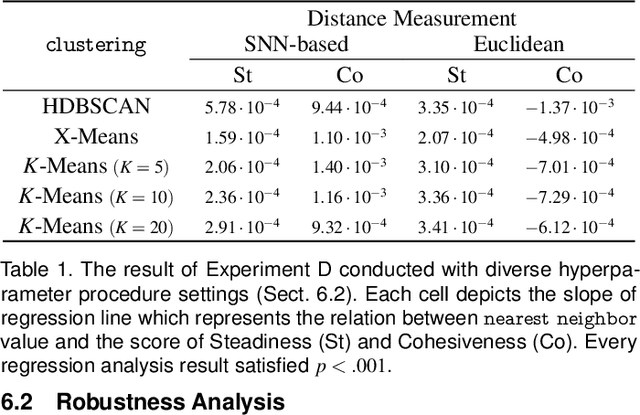
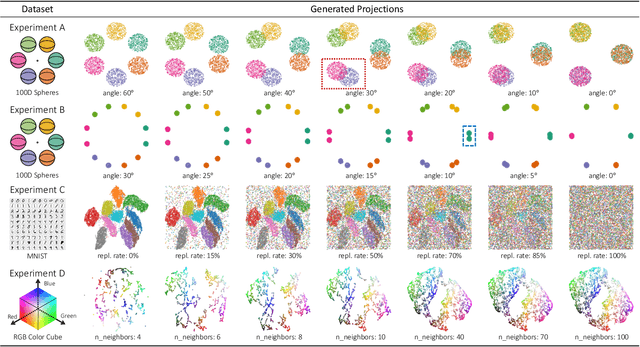
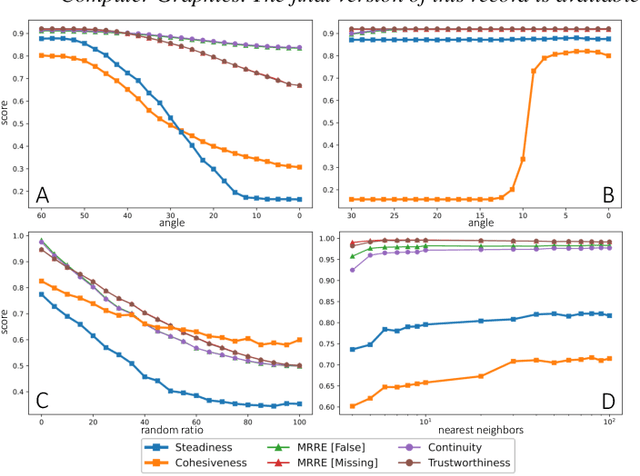
Abstract:We propose Steadiness and Cohesiveness, two novel metrics to measure the inter-cluster reliability of multidimensional projection (MDP), specifically how well the inter-cluster structures are preserved between the original high-dimensional space and the low-dimensional projection space. Measuring inter-cluster reliability is crucial as it directly affects how well inter-cluster tasks (e.g., identifying cluster relationships in the original space from a projected view) can be conducted; however, despite the importance of inter-cluster tasks, we found that previous metrics, such as Trustworthiness and Continuity, fail to measure inter-cluster reliability. Our metrics consider two aspects of the inter-cluster reliability: Steadiness measures the extent to which clusters in the projected space form clusters in the original space, and Cohesiveness measures the opposite. They extract random clusters with arbitrary shapes and positions in one space and evaluate how much the clusters are stretched or dispersed in the other space. Furthermore, our metrics can quantify pointwise distortions, allowing for the visualization of inter-cluster reliability in a projection, which we call a reliability map. Through quantitative experiments, we verify that our metrics precisely capture the distortions that harm inter-cluster reliability while previous metrics have difficulty capturing the distortions. A case study also demonstrates that our metrics and the reliability map 1) support users in selecting the proper projection techniques or hyperparameters and 2) prevent misinterpretation while performing inter-cluster tasks, thus allow an adequate identification of inter-cluster structure.
Interactive Visualization for Exploring Information Fragments in Software Repositories
Apr 28, 2021Abstract:Software developers explore and inspect software repository data to obtain detailed information archived in the development history. However, developers who are not acquainted with the development context suffer from delving into the repositories with a handful of information; they have difficulty discovering and expanding information fragments considering the topological and sequential multi-dimensional structure of repositories. We introduce ExIF, an interactive visualization for exploring information fragments in software repositories. ExIF helps users discover new information fragments within clusters or topological neighbors and identify revisions incorporating user-collected fragments.
 Add to Chrome
Add to Chrome Add to Firefox
Add to Firefox Add to Edge
Add to Edge